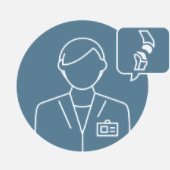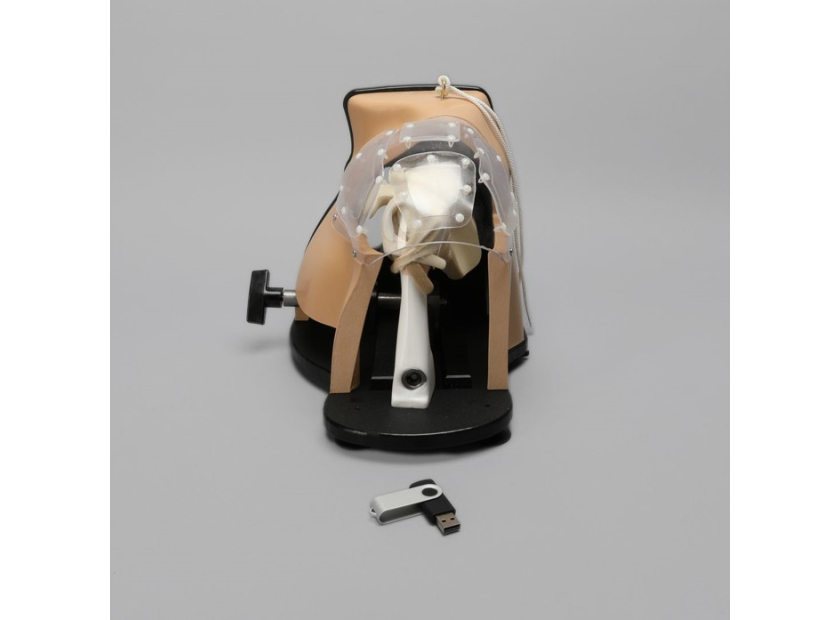Alex Shoulder Bone Models Can Train Multiple Procedures at Once
Modern shoulder bone models are offering increased value to medical instructors and their trainees by replicating a range of different procedures from a single resource. Models like the renowned Alex III Shoulder Professor, a leading tool for teaching the fundamentals of arthroscopy, can be used to practice more than half a dozen techniques, many with variable presentations.
This multi-purpose approach to medical training model production is made possible by the complexity, authenticity, and interactivity of the latest generation of materials and features.
Combined with the robust nature of current shoulder bone models and the fact that such tools can be comparable to cadaveric training methods, multi-purpose resources could become a cost-effective way to perform medical instruction at scale.
The Alex I, II, III
The Alex Shoulder Professor was created in the early 1990s in partnership with arthroscopy pioneer Dr. Stephen Snyder as a solution to the highly repetitive nature of arthroscopy training. It has been estimated that the average specialist will have to complete around 250 procedures before they can master their profession. Such a steep learning curve is further complicated by the availability and diversity of clinical subjects, and the cost and problematic handling of cadaveric alternatives.
Instead, Dr. Synder teamed with dedicated medical research engineers to produce a shoulder bone model that would withstand repeated use across an entire cohort and accommodate a number of different techniques and best practices.
The Alex has since been improved across two more iterations to authentically recreate a range of arthroscopic procedures.
The Alex III can be used to practice:
- SLAP repair
- Bankart reconstruction
- Rotator cuff repair
- Lesion repair
- Knot tying techniques
- Biceps tenodesis (arthroscopic)
- PASTA (partial articular supraspinatus avulsion)
- Subscapularis tendon repair
The tool is precise enough to aid both novice medical students and professionals, and it has been among the most popular simulations at Dr. Snyder’s own Centre for Learning Arthroscopic Surgery (or CLASroom) in Los Angeles.
Since its creation, the Alex’s headline feature has been its effectiveness.
Accurate and Affordable
The effectiveness of the Alex shoulder bone model has been established in research for several decades. In 2007, for example, tests carried out at the University of Calgary found that hands-on training with the Alex model in combination with teaching videos was at least as effective as the use of cadavers in teaching orthopaedic surgery residents fundamental knowledge of diagnostic shoulder arthroscopy.
Given that the shoulder bone model retails at a fraction of the overall cost of storing, maintaining, and disposing of a cadaveric model, and does not require student access to operating rooms this effectiveness means it can have a significant impact on instructional training practices.
A single model can not only be shared across several repeated uses, it can also be used across multiple settings and at different stages of a student’s progress. This robust multi-functionality is due to the continual evolution of medical training model features and materials.
Custom Made to Surgical Standards
The Alex was intended as a cutting-edge tool for Dr. Snyder and his colleagues to progress best practices in the rapidly evolving use of arthroscopic techniques. Consequently, it had to be both authentic and dynamic enough for even experienced practitioners to gain transportable skills through repeated use.
These elements were met in the design through the use of several key features:
|
Foam Cortical Shell |
The Alex is constructed from rigid, robust foam and cancellous material that is designed to accommodate cutting, drilling, and invasive procedures. It also features a moveable proximal humerus that can be rotated through a normal range of motion and locked into place. Finally, the joint space between the humerus and glenoid can be increased or decreased and also locked into position. |
|
Clear Portals and Windows |
As with many leading models, the Alex features a clear modular portal to offer an entry point for arthroscopic procedures. Some bone models include dual usage features that let students train on both arthroscopic and open surgeries. |
|
Buildability |
Fundamental to a shoulder bone model with multiple uses is the ability to adjust usage around a cohort’s developing capabilities and exposure. As trainees or even specialists master one procedure a new one can be added without the expense of additional resources. |
|
Haptic Feedback |
Using the same interactive principles that typify the latest digital devices, haptic feedback provides a reaction to a practitioner’s actions. Sensors within the model sound an immediate response when they meet instruments, encouraging accuracy and providing consequences to inexact movements. |
|
Radiopaque |
The best medical imaging training resources include radiopaque materials that feature enhanced visualization properties on the outer and inner surfaces. Models that vary in complexity from single bones to entire shoulder joints allow students to authentically prepare for diagnostic imaging |
The effectiveness of the Alex lies in its precise combination of these advanced features and materials. It is a process that can be repeated across any field, skeletal feature, or procedure. With the right partner, an Alex can be created to benefit students of any specialty.
The Most Cost-Effective Shoulder Bone Models
The power and practicality of models such as the Alex make significant advantages possible within any instructional medical setting. Their accuracy and ability to reliably transfer core skills to clinical settings make them a viable alternative to costly and cumbersome biological models and reduce reliance on operating rooms that can include a related risk to the public. Similarly, the multi-purpose functionality means fewer models are required to satisfy the needs of diverse settings and cohorts.
This dual impact of cost reduction and increased efficiency can be a valuable tool in designing training, especially since a model can be purpose-built to suit the latest in surgical and pedagogical thinking.
The orthopaedic training models such as the Alex Shoulder Professor are created by Sawbones in close partnership with medical education specialists. Our engineers can work with you to harness a mix of technology and durability that results in the perfect product for your purposes. For more information on our offerings or to talk about custom training models, contact us at 206-463-5551.

If you're seeking something you can't find on our website, our sales team is happy to help. We can either direct you to the right model or provide a free quote on the right custom project to meet your needs. Discover options with our clear bone models, laminated blocks, custom displays, or other machining projects.








